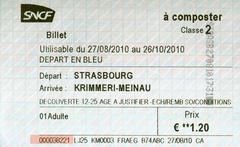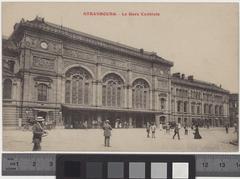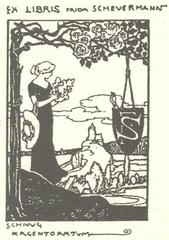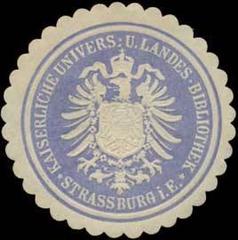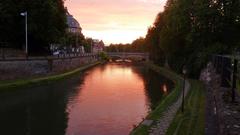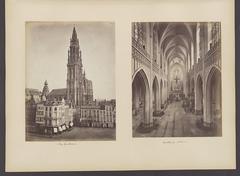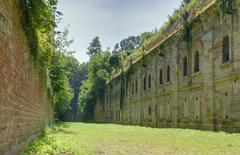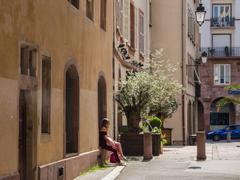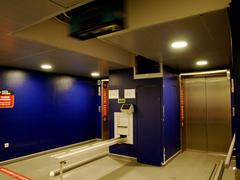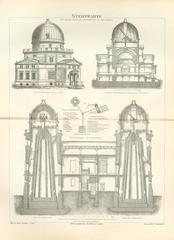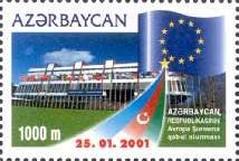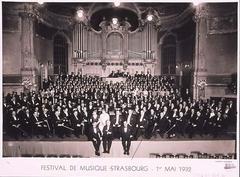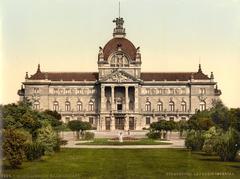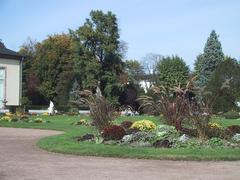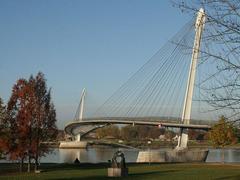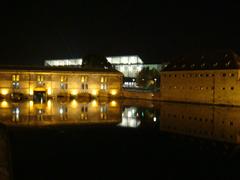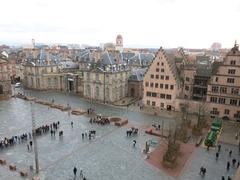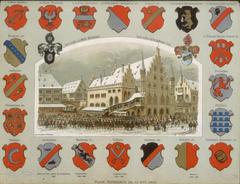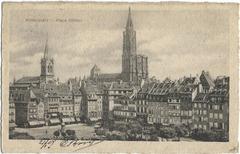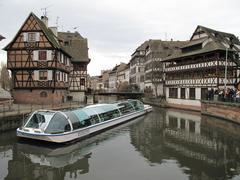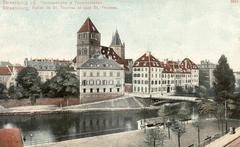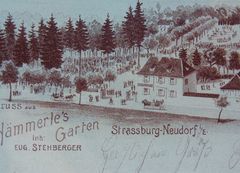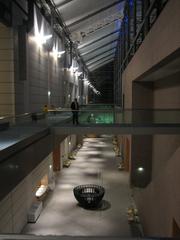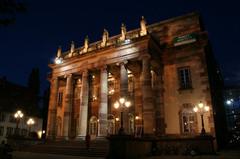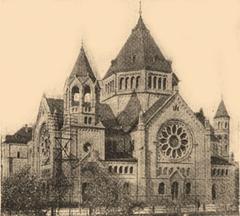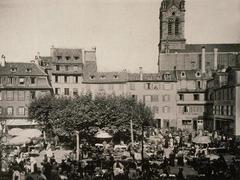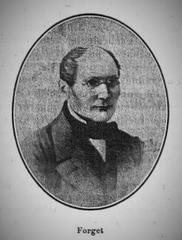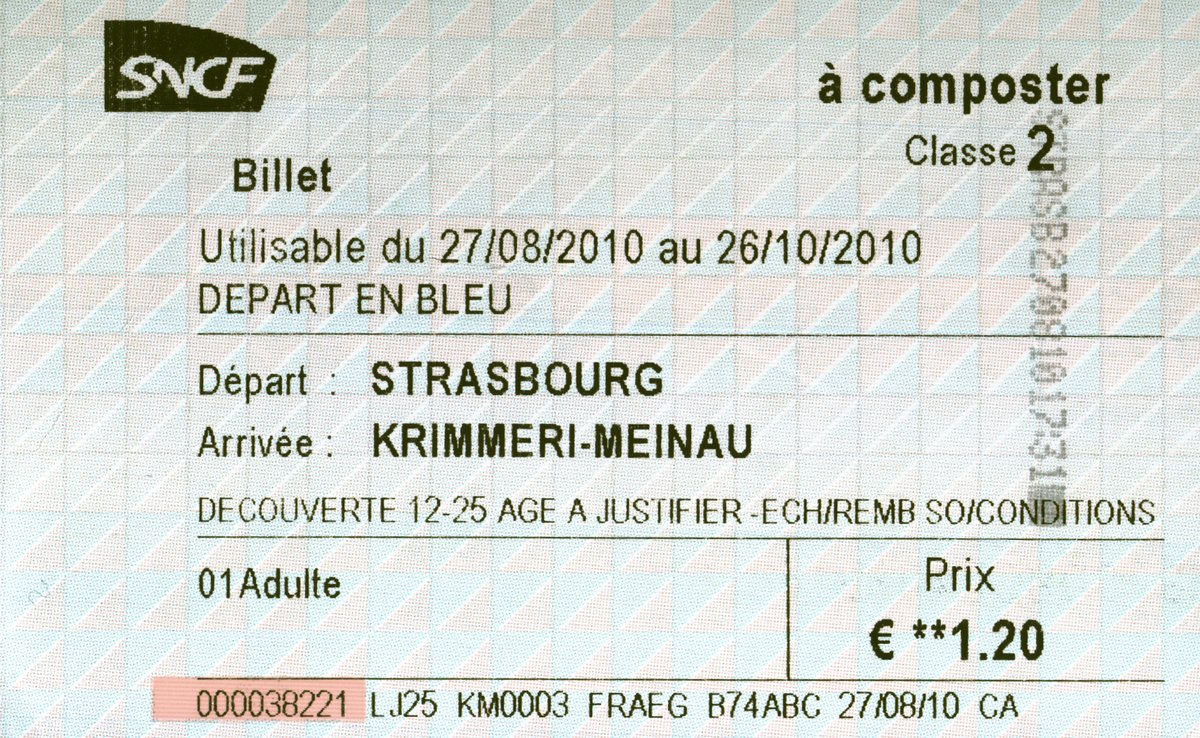
Strasbourg-Ville Station: Visiting Hours, Tickets, and Travel Guide
Date: 14/06/2025
Introduction
Strasbourg-Ville Station, locally known as Gare de Strasbourg, is more than a transportation hub—it’s a living monument that reflects the city’s Franco-German heritage and architectural innovation. This detailed guide covers everything you need to know about visiting Strasbourg-Ville Station, including its rich history, architectural highlights, practical visitor information, and travel tips. Whether you’re a first-time visitor or a seasoned traveler, you’ll find insights to make the most of your journey through this iconic gateway to Strasbourg and the broader European region (SNCF official site; Visit Strasbourg; seele.com).
Table of Contents
- Historical Overview
- Visiting Strasbourg-Ville Station
- Urban and Cultural Significance
- Nearby Attractions
- Frequently Asked Questions (FAQ)
- Conclusion
- References
Historical Overview
Origins and Early Development
Strasbourg-Ville Station was inaugurated in 1841 as a key node on the Strasbourg–Basel railway line. Its location just outside the city’s historic core was influenced by 19th-century urban fortifications. After the Franco-Prussian War (1870–1871), the region’s political landscape shifted, leading to significant expansion and modernization of the station to accommodate increased cross-border traffic and assert German imperial presence.
Neo-Renaissance Architecture and German Influence
The current station building, completed in 1883, was designed by Johann Eduard Jacobsthal in the Neo-Renaissance style. With its elaborate stonework, arched windows, and prominent clock tower, the structure blends Alsatian motifs and German design elements, symbolizing the region’s dual identity and strategic importance.
Modernization and the Glass Canopy
Throughout the 20th century, Strasbourg-Ville Station underwent electrification and platform upgrades. The most significant transformation occurred in 2007, when a monumental glass canopy—designed by Jean-Marie Duthilleul—was added. This structure envelops the historic façade in a transparent shell, creating a striking interplay between old and new (seele.com). The canopy, built with cold-bent laminated safety glass, enhances natural light, improves passenger comfort, and preserves the visual integrity of the original architecture.
Visiting Strasbourg-Ville Station
Opening Hours
- Station: Open daily, 24 hours (main public areas typically accessible from 4:30 AM to midnight)
- Ticket Counters and Information Desks: Generally open from 6:00 AM to 10:00 PM
- Shops and Cafés: Most open from 7:00 AM to 9:00 PM, with some operating on Sundays and public holidays
Ticketing and Services
- Regional, National, and International Tickets: Purchase at staffed counters, self-service kiosks, or online via the SNCF website and mobile apps.
- Ticket Types:
- TGV high-speed trains (advance booking recommended)
- TER regional trains for local travel
- ICE international trains to German cities (Frankfurt, Stuttgart, Munich)
- Multilingual Assistance: Available at information desks
- Luggage Storage: Secure lockers on site
Accessibility
- Facilities: Elevators, ramps, tactile guidance paths, accessible restrooms
- Assistance: Advance request recommended for travelers with reduced mobility
- Navigation: Multilingual signage and digital displays throughout the station
Amenities and Navigation
- Retail and Dining: A variety of shops and cafés, many open daily
- Bicycle Facilities: Secure parking and easy access to city cycling routes
- Transport Connections: Tram lines A, C, D; bus routes; taxis; bike-sharing; direct access to cross-border tram to Kehl, Germany
Travel Tips
- Best Time for Photography: Early morning or late afternoon for optimal natural light on the glass canopy and historic façade
- Guided Tours: While there are no dedicated tours of the station, many city walking tours include its history and architecture (Visit Strasbourg)
- Luggage: Use lockers to store bags and explore nearby attractions with ease
Urban and Cultural Significance
Strasbourg-Ville Station is a symbol of European unity, bridging French and German influences. Its evolution mirrors the city’s resilience and adaptability, from its 19th-century expansion under German rule to its current role as a sustainable, multimodal transport hub. The glass canopy exemplifies contemporary architectural integration, setting a benchmark for preserving heritage while enhancing public use (seele.com).
The station’s redevelopment has spurred urban growth, improved transit connectivity, and reinforced Strasbourg’s standing as an international city—home to European institutions and vibrant cultural life.
Nearby Attractions
- Grande Île: UNESCO World Heritage Site featuring Strasbourg Cathedral and medieval streets (10-minute walk)
- Strasbourg Cathedral: Majestic Gothic monument with free entry; platform climb ticket required (Strasbourg Cathedral)
- Petite France: Picturesque historic quarter along the Ill River
- Neustadt District: Showcases German imperial urban planning and architecture
- European Parliament: Reachable by tram; guided visits available
Frequently Asked Questions (FAQ)
Q: What are Strasbourg-Ville Station’s opening hours?
A: The station’s public areas are open 24/7, with main services and shops generally available from early morning until late evening.
Q: Where can I buy tickets?
A: Tickets are available at staffed counters, self-service machines, online (SNCF), and through mobile apps.
Q: Is the station accessible for people with disabilities?
A: Yes, it features elevators, ramps, tactile paths, accessible restrooms, and assistance services.
Q: Are there luggage storage facilities?
A: Secure lockers are available for baggage.
Q: What attractions are near the station?
A: Grande Île, Strasbourg Cathedral, Petite France, Neustadt, and the European Parliament are all within walking distance or a short tram ride.
Conclusion
Strasbourg-Ville Station is an architectural and cultural landmark at the heart of one of Europe’s most dynamic cities. With its seamless blend of Neo-Renaissance grandeur and innovative modern design, the station offers travelers a welcoming entry point, comprehensive amenities, and a unique glimpse into Strasbourg’s layered history. Whether you’re passing through or starting your exploration here, make the most of your visit using the resources provided by the SNCF official site, local tourist offices, and travel apps like Audiala.
References and Further Reading
- Strasbourg-Ville Station information, SNCF official site
- Strasbourg Station glass canopy project, seele.com
- Visit Strasbourg – Culture and Attractions, Visit Strasbourg
- Official Strasbourg Station website, Int Strasbourg Station
- Strasbourg Cathedral, Strasbourg Cathedral
For live updates, audio guides, and exclusive content, download the Audiala app and follow us on social media to enhance your Strasbourg experience.
